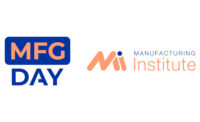Survey responses from more than 160 manufacturers across eight industry segments show that most companies understand the need to respond to shorter product lifecycles, increased customer expectations, fluctuating inventory levels and changing costs. But few recognize the impact of that strategy on the manufacturing infrastructure, or the trade-offs needed between efficiency and responsiveness, according to Tim Vaio, leader of the Industrial Products group for Hitachi Consulting, the IT and consulting company of Hitachi Ltd.
The2009 Supply Chain Responsiveness Surveywas conducted to help companies better understand the business processes and technologies needed to become more responsive to market changes, and to learn which supply chain business practices lead to real business benefits. The study also examined how companies detect change, the levers they use to respond to change and the barriers to being responsive.
The research shows a 1% improvement in return on assets for every four years of investment in supply chain excellence. Other findings include:
“One of the biggest surprises in these results,” says Vaio, “is that respondents said the top barrier to improving responsiveness is their own culture. We believe this indicates that most performance measures are inhibiting change by rewarding siloed behavior. To become responsive companies need to take a holistic approach across all supply chain functions and develop processes and metrics that reward end-to-end supply chain success.”
“Cracking the nut requires a focus in three areas: culture, right-sizing complexity and rethinking financial reward systems. Culture is the biggest barrier to achieving agility,” says Lora Cecere, vice president of value services at AMR Research. Cecere led the research project at AMR Research.


